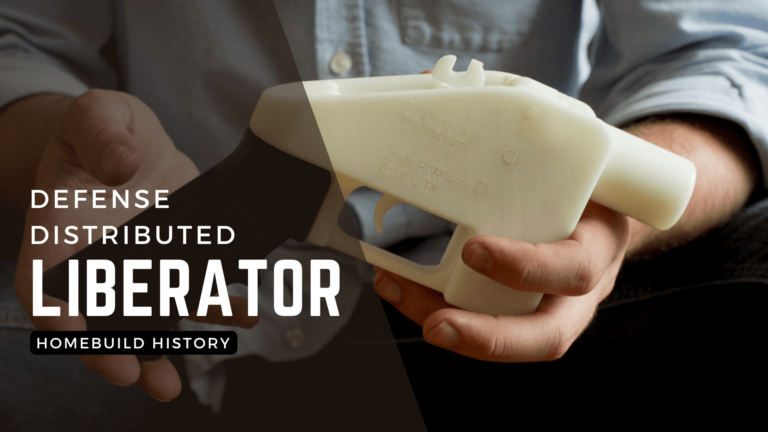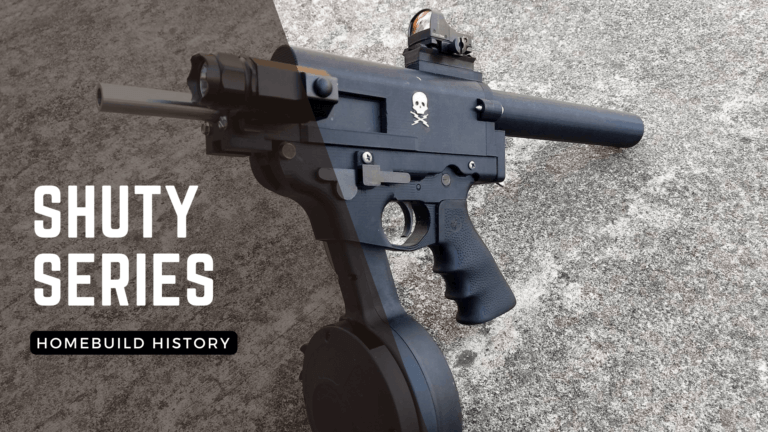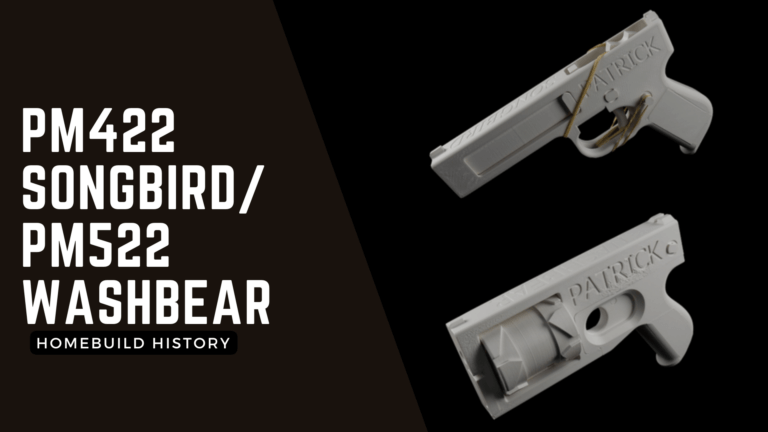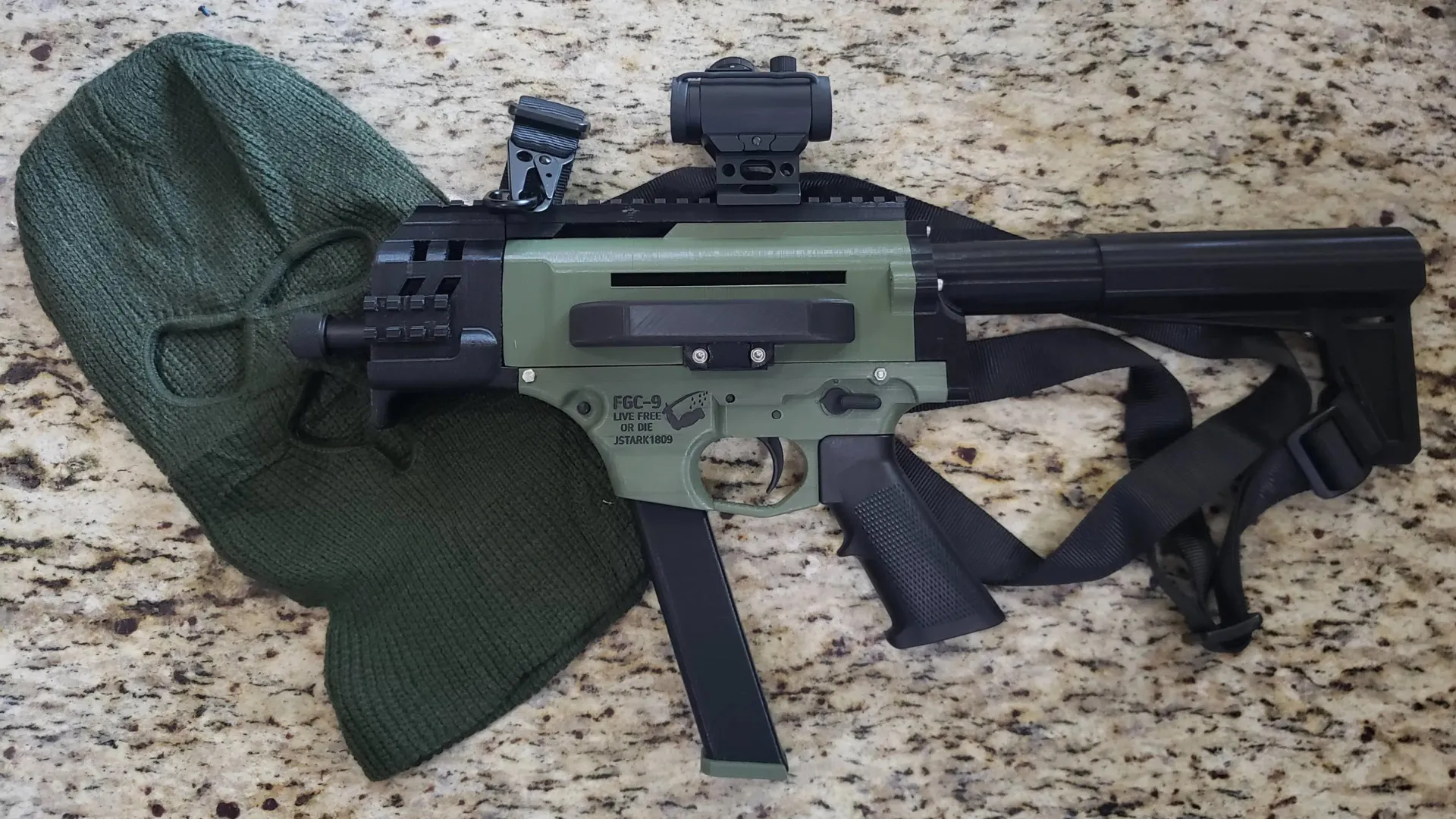Welcome to Homebuild History, a new segment on 3D Gun Builder’s website where we focus on the history of some of the most iconic homebuilt firearms, their contributions to the world, and most importantly, how YOU AT HOME can get your hands on these classic arms and armaments!
What’s the Story?
Enter Philip Andrew Luty, farmboy extraordinaire turned weapons designer. In the wake of the Dunblane massacre, which gave British gun control advocates the excuse they were looking for to crush the rights of law-abiding citizens, Luty had an epiphany.
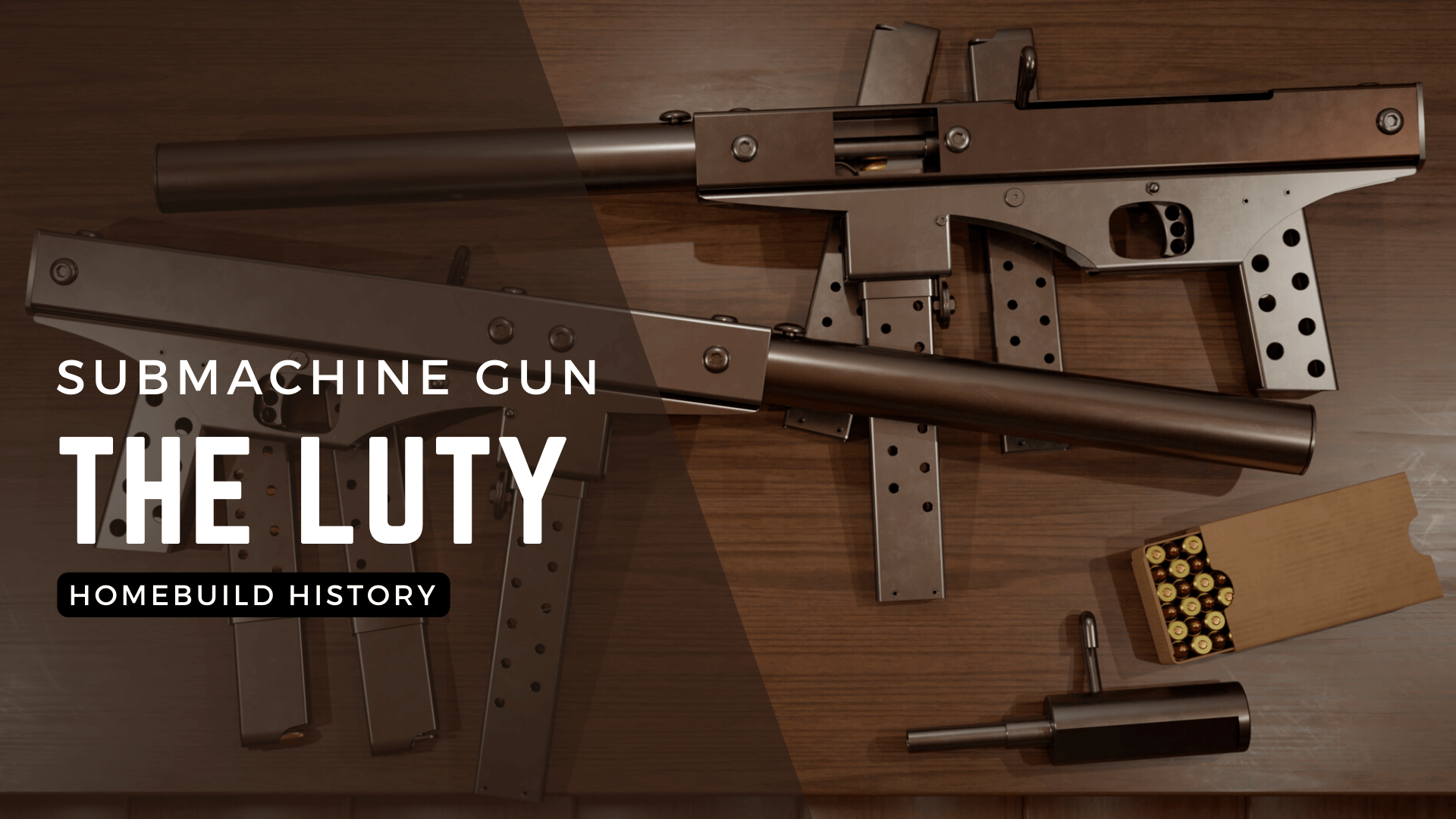
Guns were going to become illegal whether he wanted them to be or not. His right as an Englishman to bear arms in defense of himself and his country was about to be sacrificed on the altar of appeals to emotion. There was only one solution to this problem: become impossible to infringe on.
Thus was born the original Luty SMG.
Luty’s goals were to prove several things. First and foremost among them was the indisputable fact that a man who wants a gun can and will get a gun, no matter what red tape you put in front of him.
In short, “criminals don’t follow the law.” Additionally, he wanted to prove a gun could be designed by someone with zero firearms experience whatsoever. And most importantly, he wanted to create a gun that was impossible to ban the construction of. By all accounts, he succeeded.

The Luty is a standard simple blowback submachine gun. There’s nothing particularly innovative about how it works as much as how it’s made. The Luty’s parts were ubiquitously sourced from hardware stores and fabricated at Luty’s own small-scale shop. Without banning civilian access to sheet metal, steel tube, nuts, bolts, and screws, it was and is impossible to ban the Luty from being built.
Consequences and Upgrades
Luty’s efforts to push back against the overzealous British gun laws were not without personal hardship. In the late 1990s, he was interdicted on his farm by British police and, eventually, was arrested for four years for construction of illegal firearms.
In 2009, apparently not satisfied with having smeared him as a criminal, the British anti-terrorism unit raided his house. At the time of his death from cancer in 2011, he was still being investigated for the nonsensical claim that he possessed guides on how to commit terrorism. Despite his passing, Luty’s passion and designs have lived on well past his death.

Luty freely distributed his books detailing weapon design on the internet, and the world grabbed them by storm. Before his death, a number of theoretical improved variants that were never actually fabricated came into existence. The BSP SMG, Luty’s last proper design, was an improvement on the Luty in that it lowered manufacturing time by using British Standard Pipe fittings, lengths and sizes. This decreased the amount of work someone had to put into fabricating an example.
As the design was going global, various local industries began trying to tweak the Luty design to meet local sensibilities. The original design lacked a stock, sling, foregrip, and many other features found on conventional firearms. Its grip was a piece of formed sheet metal with holes in it, one of the most uncomfortable ever made. Its barrel wasn’t even rifled, providing the shooter with sub-optimal accuracy at around 15 feet.

Stocks were integrated, whether crude like the Sten gun’s or more complex like an AR-15. Clunky metal “pistol grips” were replaced with either custom molded examples or M16A2-style grips. The lower receiver was modified for increased durability. In some cases, as seen in the example above, the receiver was left uncut, increasing durability. Other examples used a different magazine latch, since the original’s was a bit of spring steel and a ground-down bolt.
The Infamy of Proliferation
While rarely seen in the United States for obvious reasons, the Luty has established itself quite firmly in parts of the world with restrictions on the right to bear arms. Australia, the UK, Brazil, Mexico… Across countless nations, Lutys have been made, used, and sometimes abused by populations whose total numbers in the billions. While varying in fit and finish, sometimes wildly so, their proliferation is so great that they rival the much older MAC series and Sten gun when it comes to numbers seized by police.

Lutys have, by the mainstream media at least, been associated less with the hobbyist movement and more with crime and terror. In 2019, the gun reached the apex of media attention when two examples, one conventionally made and one 3D printed, were used by a shooter in an abysmal terrorist attack on the synagogue in Halle, Germany.
Whether through divine providence or human incompetence, the guns for the most part failed to function. Stephan Balliet’s failed attempt at being a mass-murdering terrorist ensured he would replace Michael Moore as Google’s top search result for “miserable failure.”
While superior semi-auto and even proper submachine gun designs have come out since the Luty was made over 30 years ago, the Luty was almost as valuable as a tool for inspiration as it was for proliferation. Inspired by the Luty’s ease of home construction, home gunsmith Darren “Derwood” Booth designed the Shuty, a modern 3D-printed take on the design.
The Shuty developed into the AP-9 PCC, which became the MOD9 and which itself inspired JStark to make the entire design unrestricted – which resulted in the FGC-9.

And no, the plans for the above design aren’t out there.
How do I make it?
So far as getting the plans to build an arsenal of these things goes,* the Luty is simple: www.thehomegunsmith.com. Mr. Luty’s website has, is, and will presumably remain up indefinitely, complete with the original links for his books. In addition to the plans for the Luty as found in Expedient Homemade Firearms, Luty has plans for several other designs, including 3 other submachine guns, a silenced .22 pistol, a 12 gauge shotgun pistol, and much more.

In the United States, we at 3DGunBuilder recommend builders look at Luty’s plans for the semiautomatic version of his BSP SMG design. As a semi-auto, it can be built at home with no issues, no licenses, no registration, and no red tape.
Tune in next week for more Homebuild History!
*Legally, of course. Laws don’t stop you from building this, but we at 3DGunBuilder encourage readers to follow all legal guidelines. If you can’t make this in your state or country, please don’t try to. Just remember that this is here for educational and research purposes only.

